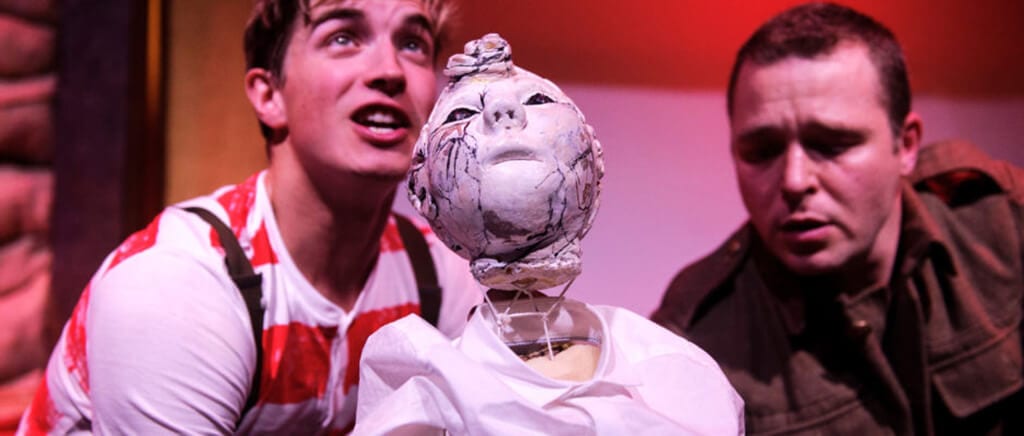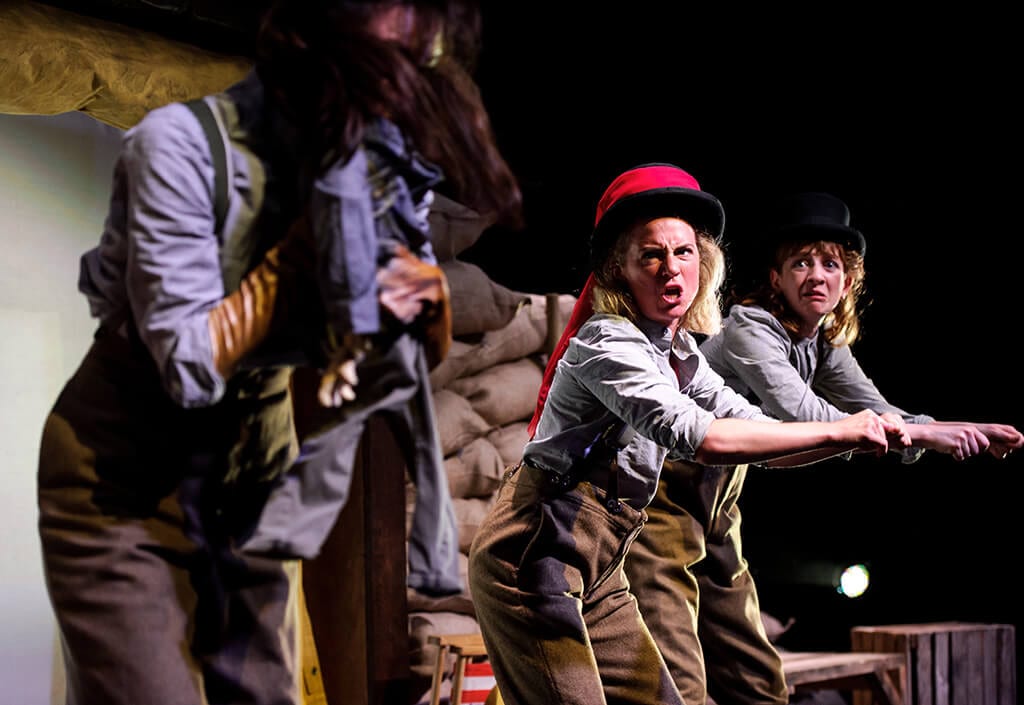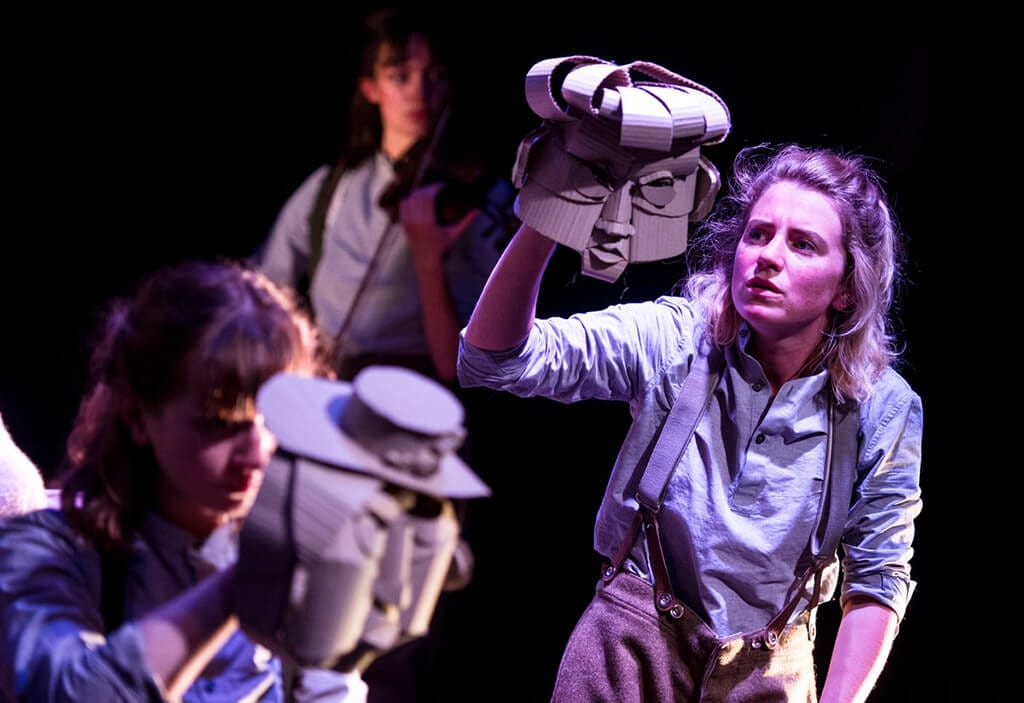The Battle of the Somme in World War I is a grim setting for a world populated by imaginary tigers, imperious princes, and reuniting lovers. This is the point really. Pinned down In their warren of trenches, the soldiers are likened to ferrets, scurrying here and there in their confined dirt world, the whizzing bullets and booms of war all around. Saki is the pen name for a revered, already-middle-aged English short story writer who joined the war as a private. He brought his storytelling gifts with him into the hellish trenches; no wonder that the young soldiers adored the temporary liberation he offered by inviting them into his droll, somewhat dark, tales. He is compared with Roald Dahl and P.G. Wodehouse. I would throw in a bit of Graham Greene as well.
Life According to Saki won Best of Edinburgh at the Fringe Festival in 2016 no doubt in large part because of the charming and endlessly inventive staging it employs in bringing Saki’s stories to life. A nimble cast of six manipulate themselves and a small assortment of props to suggest myriad animals, starchy English characters, and settings. An empty picture frame held in mid air is in one moment various paintings being looked at in a gallery, in the next the windshield of a period car, lurching left and right and tumbling over and over sideways into a ditch. Beebees shaken in a can give us the rhythmic acceleration of a railroad. A pair of women employ subtle hip movements to suggest riding side-saddle while gossiping during a hunt. Later, without missing a beat, they gallop and charge together.
The ensemble transforms kaleidoscopically again and again as do each of the players. There’s a Pythonesque disregard for gender as they embody a range of late Edwardians, from servants to baronesses, with a few Frenchmen added for local color.
All this gleeful stagecraft is really what stays with you, more than any particular story, including that of Hector Hugh Munro, the beloved Saki. We have little sense that death’s shadow hangs over the young soldiers’ lives, even if they are cheerfully keeping it out of mind. Playwright Rundell might have given us an early brush with mortality so we feel what’s at stake. And David Paisley as Saki, though affable and entertaining enough, does not convincingly seem to be the spinner of these tales, the knowing papa-figure who delights in bringing these fellows away on his imaginative journeys. The wry wit so clearly on display in the stories themselves should just as clearly be his wit, reflecting his pleasure in the creation and in the sharing, not just something he amiably narrates. And director Jessica Kazar, for all the wonderful, inspired theatrics, misses a dramatic trick–having the collective group of soldiers’ eyes almost imperceptibly glisten and warm when Saki brings them into a new tale. We need to sense what it means to the soldiers to get to be part of his insane troupe in that insane world. It will make the impact of his inevitable loss much more meaningful to us.



